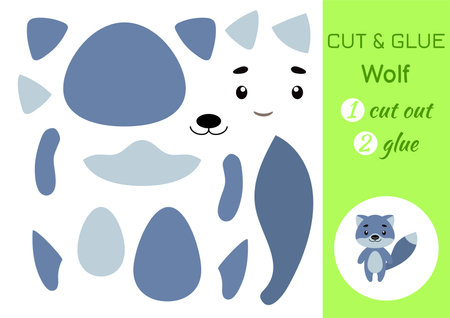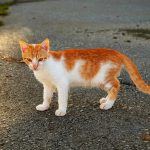Understanding Obesity in Small Pets
Obesity is a growing concern among small pets like rabbits, guinea pigs, hamsters, and ferrets across the United States. In essence, obesity occurs when a pet accumulates excessive body fat to the point that it negatively affects their health and wellbeing. While the ideal weight varies by species and breed, a noticeable increase in body mass, difficulty moving, and an inability to feel ribs easily are common indicators of obesity in these animals. The primary causes of obesity in small pets often stem from overfeeding, lack of appropriate exercise, and offering calorie-rich treats or foods that do not match their natural dietary needs. Additionally, factors such as age, genetics, and medical conditions can also contribute to excess weight gain. Understanding the basics of what constitutes obesity in small pets—and recognizing its causes—is essential for responsible pet ownership and lays the groundwork for effective prevention strategies.
2. Why Exercise Matters
Regular physical activity is essential for small pets, not only to prevent obesity but also to support their overall health and happiness. Unlike wild animals that naturally stay active through hunting or foraging, many small pets in American households—such as rabbits, guinea pigs, hamsters, and ferrets—spend much of their time in confined spaces. Without enough movement, these pets are at risk for weight gain, which can lead to a host of health problems including diabetes, heart disease, joint issues, and a shortened lifespan.
Exercise helps burn excess calories, improves metabolism, and keeps muscles and joints strong. It also stimulates mental health by providing enrichment and preventing boredom-related behaviors like chewing furniture or excessive grooming. Just like people, small pets benefit from a routine that includes both structured playtime and opportunities for natural movement within their environment.
The Benefits of Regular Exercise for Small Pets
| Benefit | Description |
|---|---|
| Weight Management | Helps burn calories and reduces fat accumulation |
| Mental Stimulation | Prevents boredom and destructive behavior |
| Joint & Muscle Health | Keeps pets agile and prevents stiffness or injury |
| Improved Digestion | Promotes regular bowel movements and gut health |
| Longer Lifespan | Reduces the risk of chronic diseases linked to obesity |
The American Experience: Why It’s Especially Important Here
In the United States, small pets are often pampered with treats and may not get the amount of exercise they need due to busy lifestyles or limited living space. This makes it even more important for pet owners to intentionally provide daily opportunities for activity. Whether its supervised floor time for a guinea pig or an exercise wheel for a hamster, making physical activity part of your pets daily routine is key to preventing obesity and ensuring their long-term well-being.
![]()
3. Types of Exercise for Small Pets
When it comes to preventing obesity in small pets, choosing the right type of exercise is key. Not all activities suit every species, and American pet owners need options that are safe and practical for their living spaces. Below is a breakdown of engaging exercises tailored to different kinds of small pets commonly found in U.S. households.
Exercise Ideas for Small Mammals
Hamsters and Gerbils
For these energetic little animals, running wheels are a staple. Make sure the wheel is solid-surfaced to prevent injury. Tunnels, climbing tubes, and supervised playtime in secure playpens also encourage natural behaviors and keep them active.
Rabbits and Guinea Pigs
Both species benefit from floor time outside their cages in bunny-proofed rooms or enclosed yards. Provide cardboard boxes, ramps, and tunnels for exploration. For rabbits especially, gentle agility courses can be both stimulating and fun.
Birds
Parakeets, cockatiels, and similar birds thrive when they can fly or flutter in a safe space. Set up play gyms with ladders and swings inside their cages or allow out-of-cage flying time in a bird-safe room with closed windows and no toxic plants.
Reptiles
While reptiles like turtles or lizards may not “exercise” in the traditional sense, providing rocks, branches, or climbing platforms lets them move naturally. Supervised exploration outside their tanks (in controlled environments) also helps them stay active.
Safety First
No matter which pet you have, always supervise new activities at first and ensure toys or exercise setups are free from sharp edges or choking hazards. Choosing the right type of exercise not only helps prevent obesity but also strengthens the bond between you and your pet.
Creating a Safe and Enriching Environment
Setting up your home or pet enclosure to foster exercise and mental stimulation is crucial in preventing obesity in small pets. A thoughtfully designed environment not only keeps your furry friends active but also ensures their safety. Here are some practical tips to help you create the perfect space for your pet:
Choose the Right Enclosure Size
Small pets like hamsters, rabbits, guinea pigs, and ferrets require ample space to move around. The enclosure should allow for running, burrowing, climbing, and playing. Avoid cramped cages that limit movement, as this can discourage activity and lead to weight gain.
Provide Safe Exercise Equipment
Equip your pet’s area with appropriate exercise tools that match their species’ needs. Use the table below for guidance:
Pet Type |
Recommended Exercise Tools |
|---|---|
| Hamster | Exercise wheel (solid surface), tunnels, climbing platforms |
| Rabbit | Tunnels, cardboard boxes, ramps, safe chew toys |
| Guinea Pig | Hideouts, tunnels, floor time in a secure playpen |
| Ferret | Tubes, hammocks, balls, interactive toys |
Mental Stimulation Matters Too
Boredom can lead to overeating and inactivity. Incorporate puzzle feeders, foraging toys, and rotation of enrichment items to keep your pet’s mind engaged. These activities mimic natural behaviors and encourage movement while offering fun challenges.
Safety First: Pet-Proof Your Space
Before letting your pet roam or introducing new equipment, ensure all areas are free from hazards like exposed wires, toxic plants, or small objects they could swallow. Secure lids on enclosures and block off spaces where your pet could get stuck or injured.
Quick Tips for a Safe & Active Home:
- Supervise out-of-cage playtime in a designated safe area.
- Regularly clean and inspect toys and exercise equipment for wear and tear.
- Switch up the layout of toys and obstacles weekly to keep things fresh.
- Offer new experiences gradually so your pet doesn’t get overwhelmed.
An enriching environment is key to promoting daily physical activity and preventing obesity in small pets. With the right setup at home, you’ll help your little companion stay healthy, happy, and mentally sharp.
5. Recognizing the Signs of Obesity and Inactivity
Spotting the early warning signs of obesity and inactivity in small pets is crucial for their long-term health. As a responsible pet owner, you should regularly monitor your pet’s weight and body shape. If you notice that your rabbit, guinea pig, hamster, or other small animal seems to have lost their defined waistline, has difficulty grooming themselves, or struggles to move around as easily as before, these can be red flags. Additionally, pay attention to reduced interest in playtime or exercise wheels, excessive sleeping, or a reluctance to explore their environment. These behavioral changes often indicate decreased activity levels and potential weight gain.
Another important indicator is the feel of your pet’s body. When gently running your fingers along their sides, you should be able to feel ribs without excess fat covering them. If you find it difficult to distinguish the ribs or spine due to a thick layer of fat, this could signal obesity. Be alert for any breathing difficulties, which may also occur if excess weight places additional strain on their bodies.
Early intervention can make a big difference in reversing unhealthy trends. Keeping a log of your pet’s weight and activity habits can help spot subtle changes over time. Consult with a veterinarian if you are unsure about your pet’s healthy weight range or need guidance on adjusting their exercise routine. By identifying these signs early, you can take proactive steps to encourage more movement and implement healthier habits before obesity becomes a serious concern.
6. Partnering With Your Veterinarian
When it comes to preventing obesity in small pets, teaming up with your veterinarian is a game-changer. Regular vet visits are essential for early detection of weight gain and other health issues. Your vet can provide valuable guidance on safe exercise routines tailored to your pet’s age, breed, and current health status. They can also help you develop a customized weight management plan that includes both diet and physical activity. By working closely with your veterinarian, you ensure that any changes in your pet’s exercise or nutrition are based on professional advice rather than guesswork. This collaborative approach not only helps prevent obesity but also supports your pet’s overall well-being, keeping them happy and healthy for years to come.


